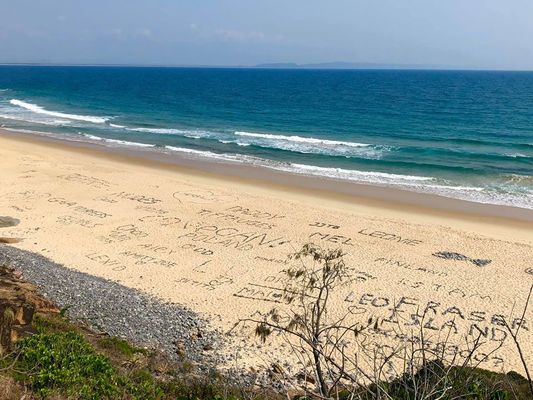In December last year, Noosa residents were left furious after seeing one of their most pristine and secluded beaches littered in rocks, spelled out into messages in the sand.
It turns out the culprits were a group of backpackers who had moved the large pebbles from the banks of the beach to spell lewd and inappropriate words in the sand such as “FRASER FCKN ISLAND BBY”, “send nudes”, and “vegan” which left locals disgusted.
Noosa residents took to social media to express their concerns, one person saying: “This is as bad as graffiti. The property is not theirs to destroy with what they think is their artistic expression.”
Another wrote: “I prefer the natural beauty of nature in a National Park, Not some lame attempt at art.”
Rangers and locals spent hours moving the rocks back into their natural placement, it is estimated that over 200 tonne of rock had been moved in the graffiti incident.
Not only do the large rocks in the soft sand pose a safety risk to adults and children, but senior ecologist Nick Clemann recently told the ABC that the act of ‘rock stacking’ could have a significant impact on endangered species.
Mr Clemann said that lots of species have evolved over thousands of years to use these rocky environments to live, forage and hunt and are entirely reliant of their natural formations.
“(Rock stacking) is a global phenomenon … anywhere there is rocks, this trend is really taking off,“ he said.
“I get it. I’ve got an Instagram account myself and I like to take photos of nature as well.
“But last year we started finding it within the habitat of some of the endangered species we work on.
“That really started to ring alarm bells.
“That’s what the animals live under and any disturbance to that can mean that the animals are pushed out,“ Mr Clemann said in his interview to the ABC.
Now it is likely that anyone caught in the ‘art’ of rock stacking could face an $8,000 fine under the act of damaging, destroying and disturbing wildlife.







